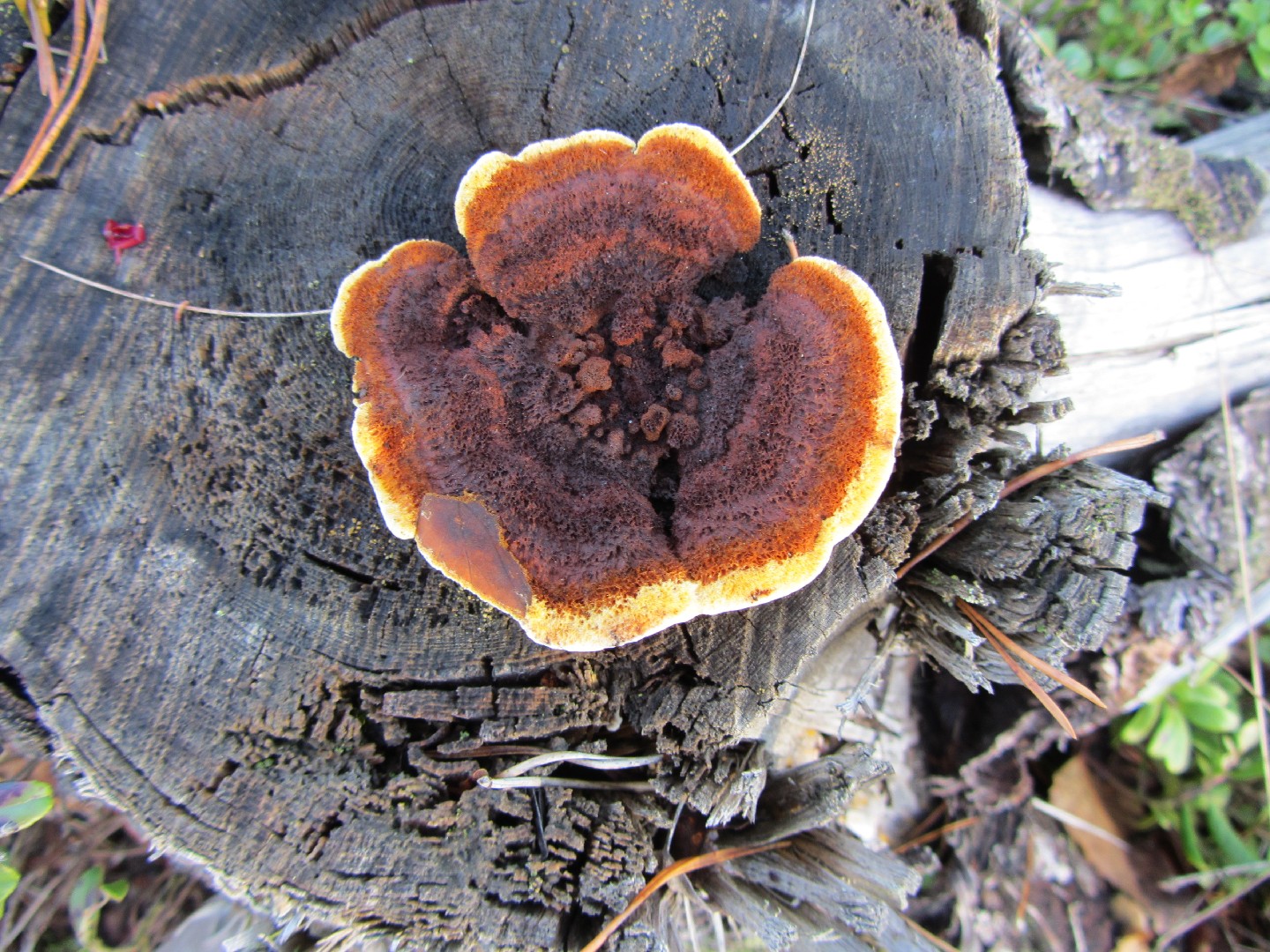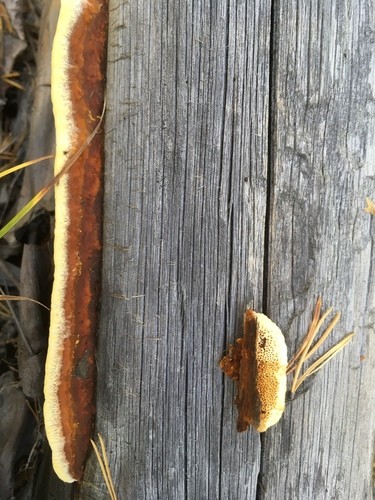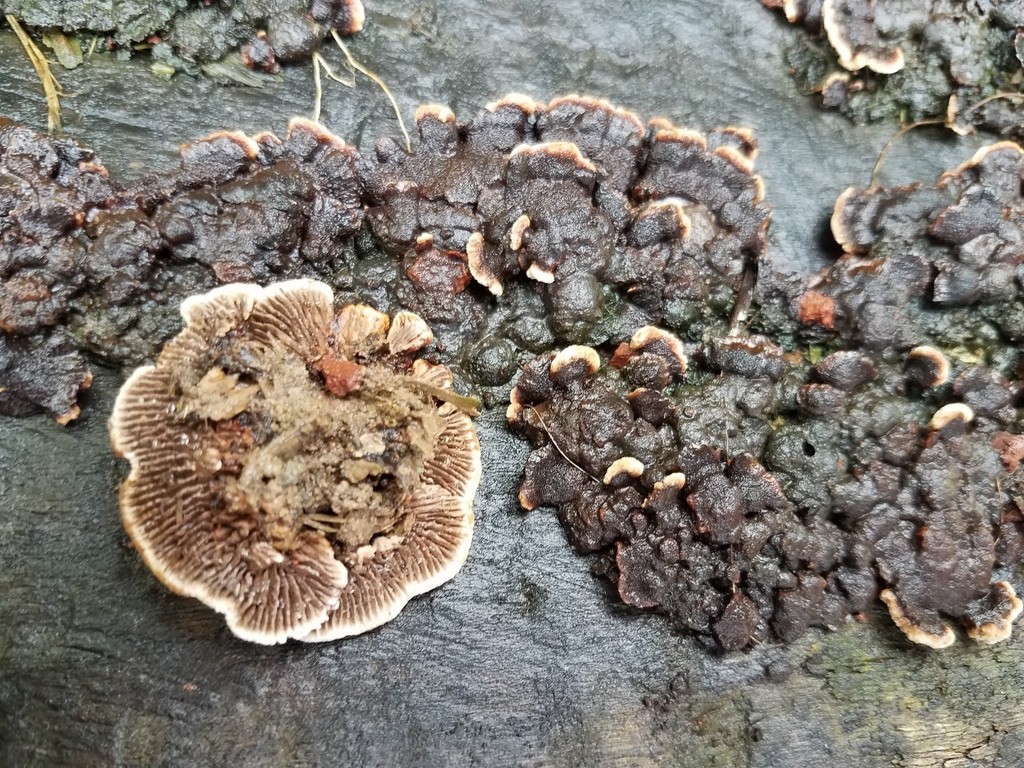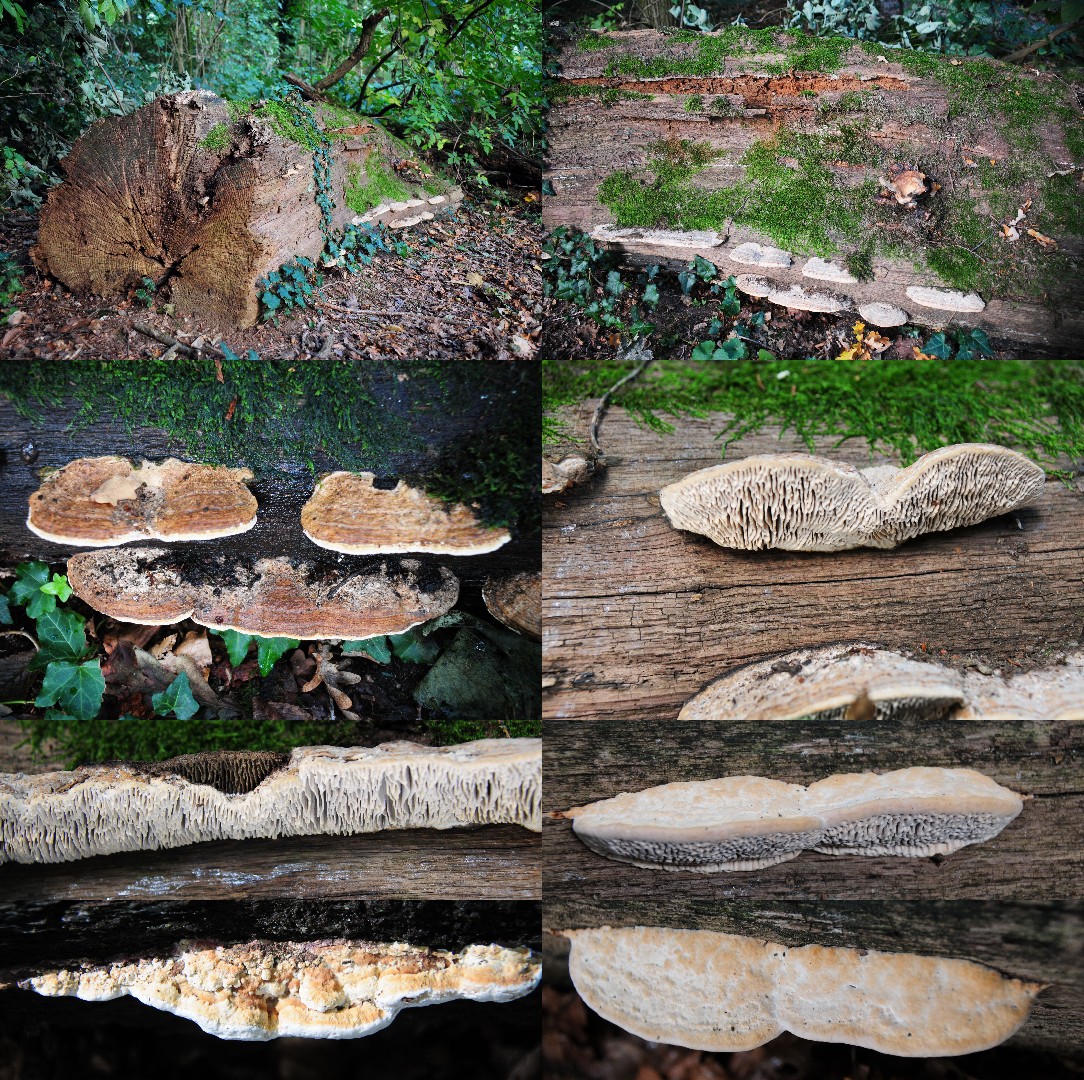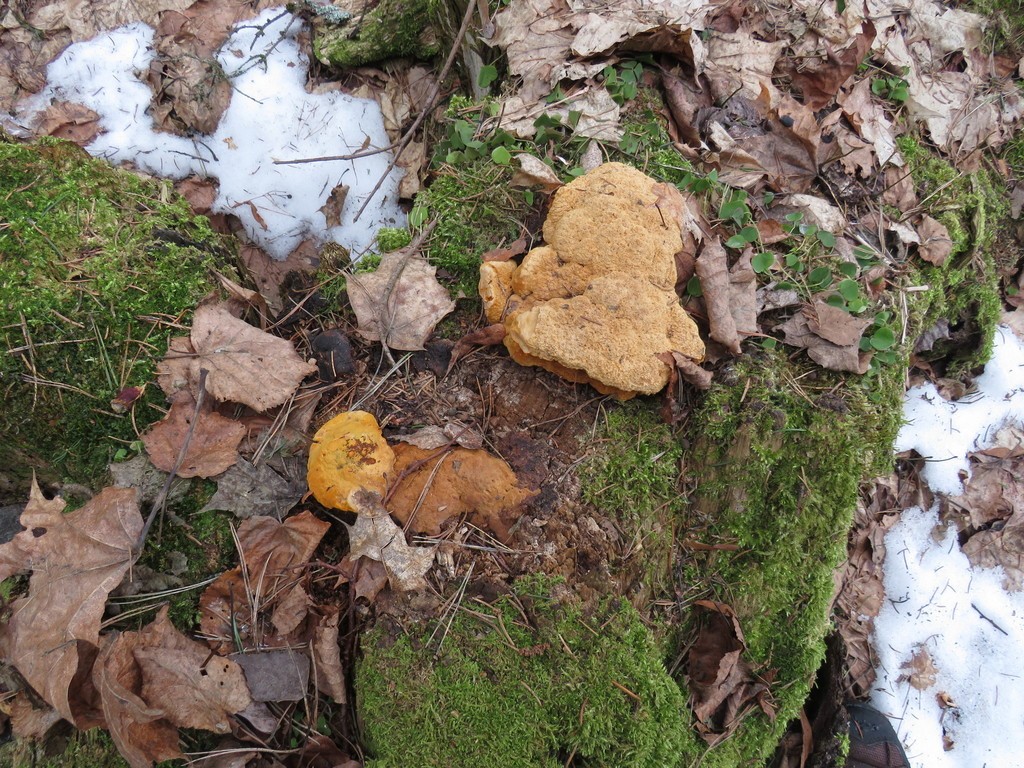Gloeophyllum
Nom scientifique: Gloeophyllum
Gloeophyllum
Nom scientifique: Gloeophyllum
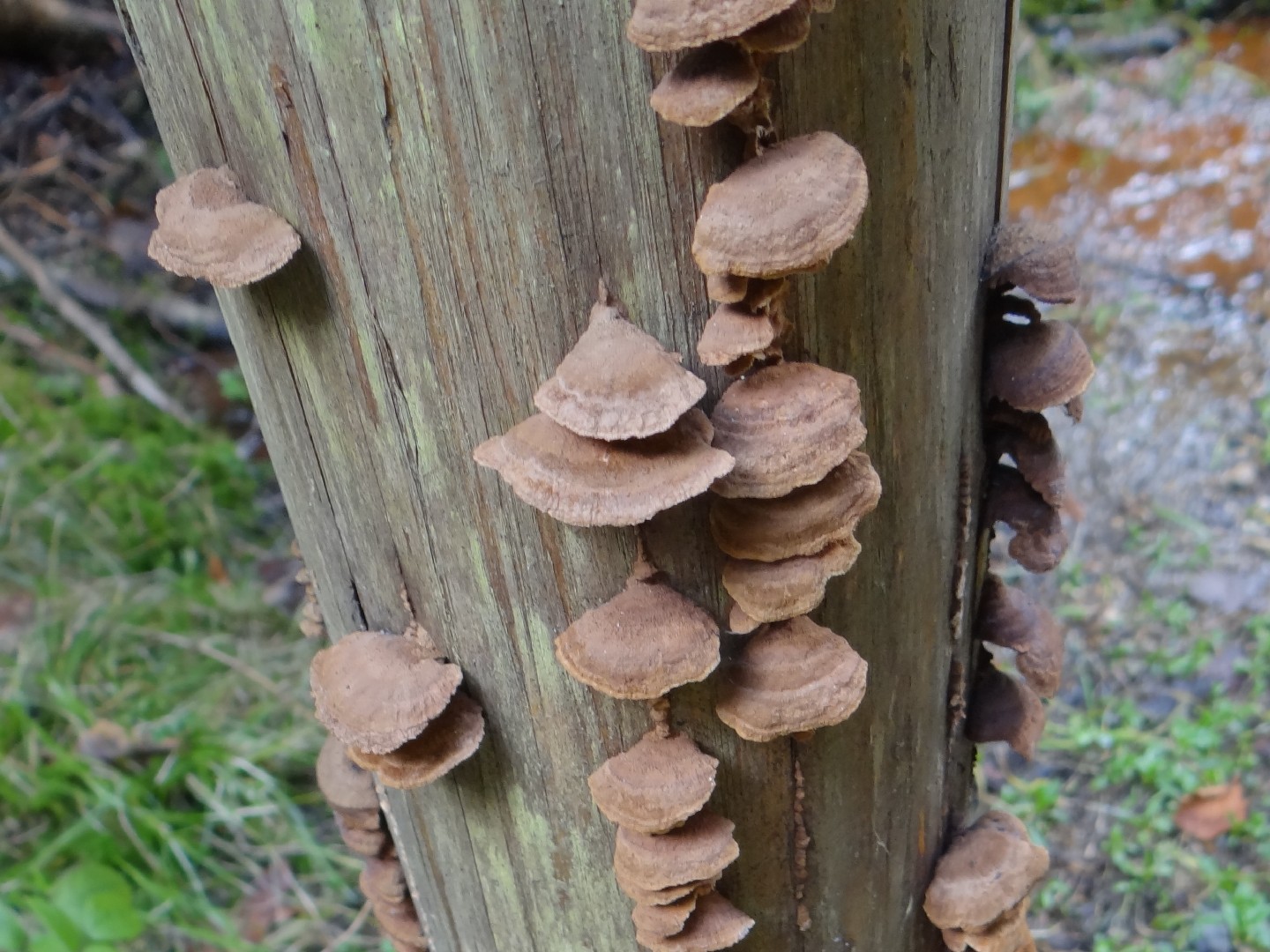 Photo By Jerzy Opioła , used under CC-BY-SA-4.0 /Cropped and compressed from original
Photo By Jerzy Opioła , used under CC-BY-SA-4.0 /Cropped and compressed from original La description
Gloeophyllum sont un groupe fascinant de champignons lignivores connus pour leur capacité à décomposer des matériaux résistants comme la lignine du bois. Ce groupe se trouve généralement sur des arbres conifères morts et des structures en bois, provoquant un type de pourriture appelé pourriture brune. Fait intéressant, gloeophyllum peuvent prospérer dans des conditions très sèches, ce qui est rare pour de nombreux types de champignons. Certaines espèces ont des corps fructifères en forme d'éventail distinctifs avec des chapeaux frappants et veloutés.
Espèces de Gloeophyllum
Classification scientifique
Phylum
Basidiomycètes Classe
Agaricomycetes Ordre
Gloeophyllales Famille
Gloeophyllaceae Genre
Gloeophyllum 